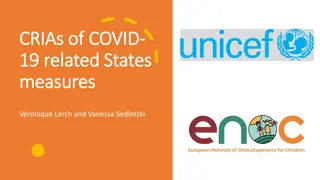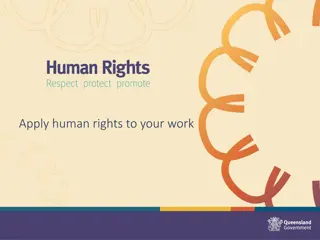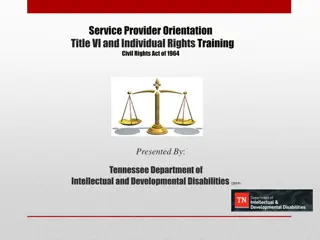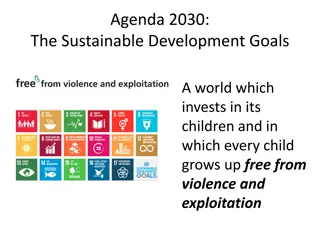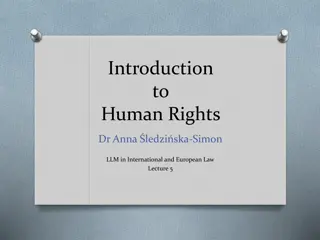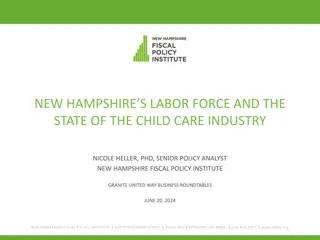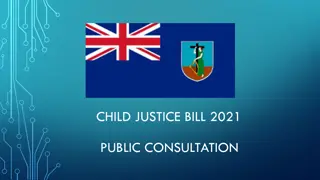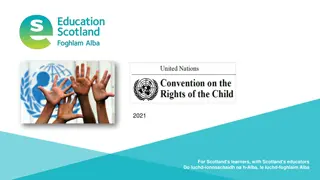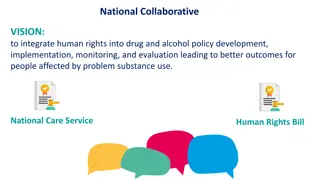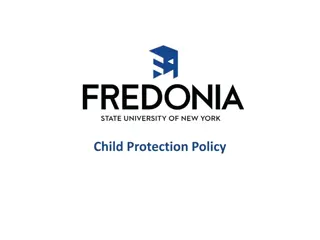Understanding Child Rights Impact Assessment (CRIA) in Policy Making
Child Rights Impact Assessment (CRIA) is a crucial procedure recommended by the UN Committee on the Rights of the Child to predict the impact of policy proposals on children's human rights. This assessment helps in identifying policy alternatives that are more consistent with child rights, involving steps like screening, scoping, evidence gathering, involving children, substantive analysis, and publishing outcomes. Learning from other countries' experiences, the main challenges include persuading governments to undertake CRIA, lack of expertise, limited capacity, and not considering negative impacts. Implementing CRIA early and inclusive of children's perspectives is essential for effective policy-making.
Download Presentation

Please find below an Image/Link to download the presentation.
The content on the website is provided AS IS for your information and personal use only. It may not be sold, licensed, or shared on other websites without obtaining consent from the author. Download presentation by click this link. If you encounter any issues during the download, it is possible that the publisher has removed the file from their server.
E N D
Presentation Transcript
Simon Hoffman Professor of International Human Rights Law Swansea University Child Rights Impact Assessment ENOC Conference 16th November 2020
Why? CRIA is a procedure to predict the likely impact of policy proposals on the human rights of children aged under 18 years. CRIA helps identify less harmful or more child rights consistent policy alternatives. UN Committee on the Rights of the Child recommends advance impact assessment as a General Measure of Implementation (GMI) of the UNCRC. CRIA is an opportunity to mainstream consideration of children s rights into policy processes. No duty to carry out CRIA. But Committee makes it very clear this is what is expected in order to meet the obligation under Article 4 of Convention to give effect to children s rights for example in General Comment No.5, (on GMI) and 19 (on Public Budgeting).
How? Screening CRIA should be applied to broad range of policies. This risks over-burdening resources leading to a tick-box exercise. Screening helps limit the number of policies subject to CRIA. Scoping and evidence gathering Without relevant evidence there is a risk is that assumptions and preconceptions will be given undue weight. It is important that data is comprehensive and disaggregated, referring to different groups of children that may be affected by a policy. Involving children It is vital to obtain children s input into CRIA as their evidence will be amongst the best evidence of the likely impact of a proposal on their rights. Substantive analysis - CRIA analysis should be carried out by someone with proper knowledge of children s rights. Reaching conclusions and publishing outcomes - CRIA should result in recommendations for amendments, alternatives and improvements which should be publicly available. Publication of CRIA promotes transparency and supports accountability.
Learning from: Belgium, Bosnia-Herzegovina, Canada, Ireland, Sweden, New Zealand, UK. Challenges, key points: Persuading government to undertake CRIA. Lack of will. Lack of direction from the Committee. Statutory underpinning for CRIA may not be enough. Needs to be clarity about the policies which CRIA is applied. Lack of expertise: ensuring that CRIA is carried out by officials with the correct level of expertise. Limited capacity: CRIA needs to be supported by adequate resources. Restrictive screening measures: screening should avoid formalities which exclude certain policies from assessment. Integrated impact assessment: may relieve the pressure on resources and mainstream CRIA but may reduce number of policies subject to child-focussed analysis, or focus on children s rights. Not including children: CRIA needs to draw on established expertise and not rely on officials. CRIA too late: CRIA needs to be introduced early to give space for alternatives. Not considering negative impacts: failure to identify potential negative impacts closes off policy alternatives.


